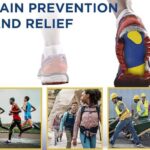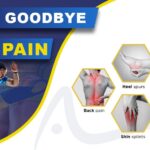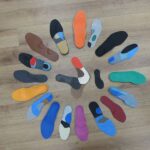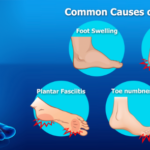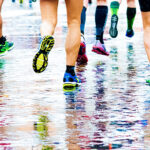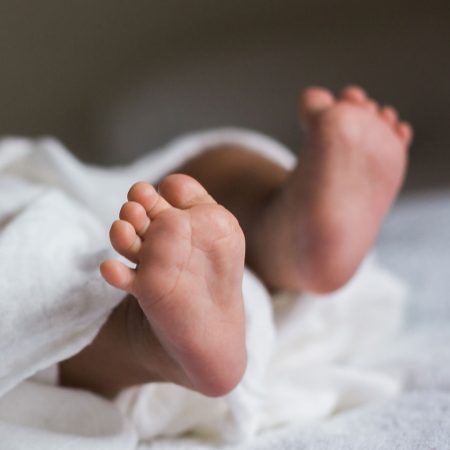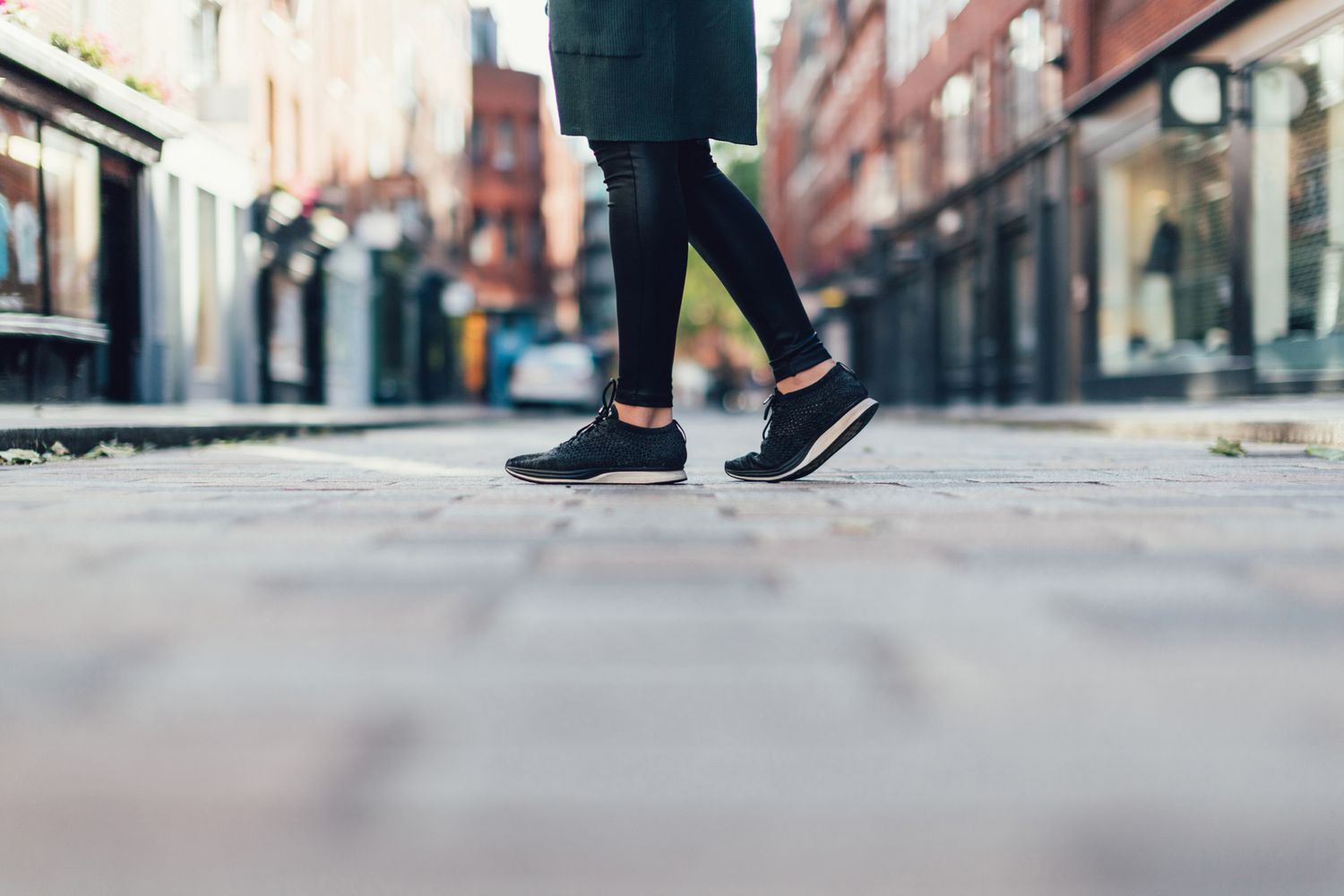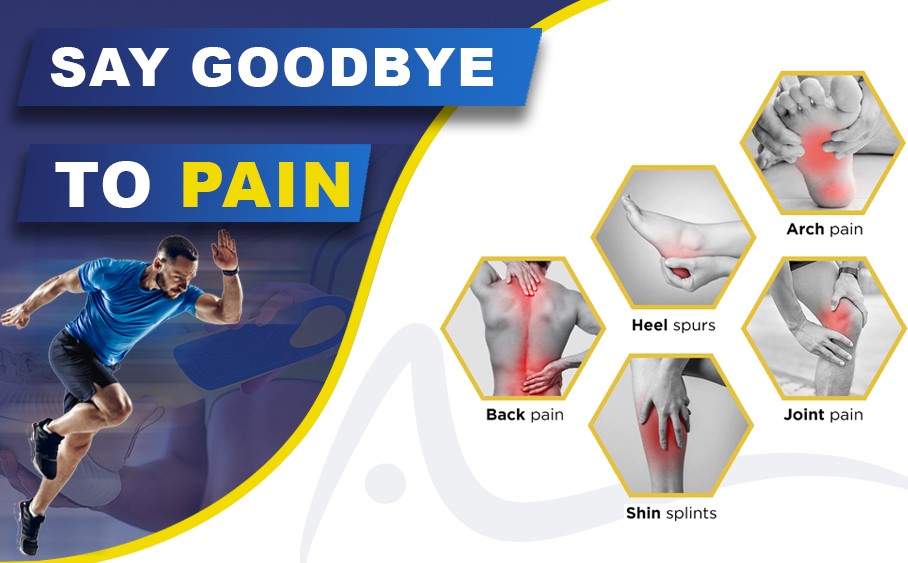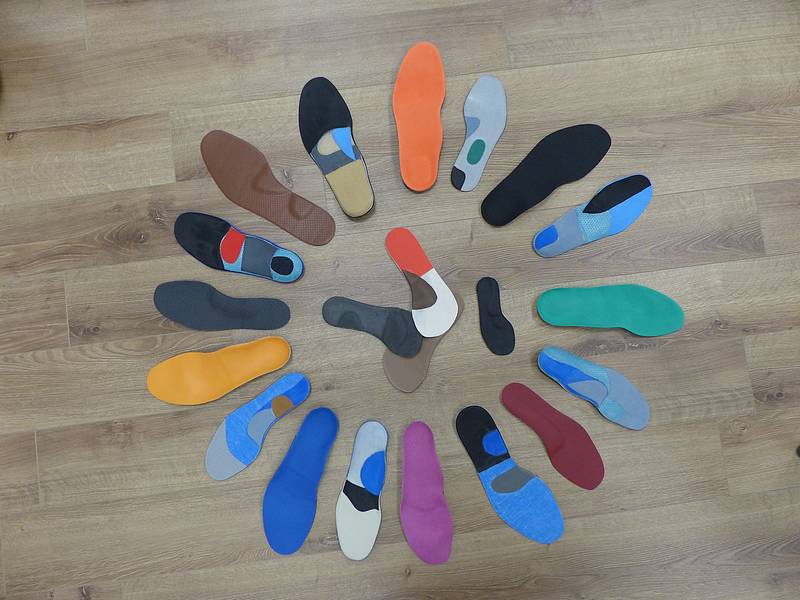When we think about the growth and development of children, our attention often gravitates towards the exceptional parts such as the brain, arms, legs, or hands. However, we often overlook the importance of the feet, despite their remarkable abilities. In this article, we will explore ways to nurture and care for baby feet, as well as discuss common foot issues in infants and why they require special attention and care.
The Captivating Beauty of Baby Feet
There’s an inexplicable charm in the delicate features of a newborn, and amidst all the tiny wonders, the miniature perfection of their feet stands out as a testament to innocence and purity. The enchanting beauty of baby feet goes beyond mere appearance; it encapsulates a profound essence of new life, untainted by the world.
In their miniature form, baby feet possess an inherent magic that captivates the hearts of parents and admirers alike. The softness of the skin, the tiny, wiggling toes, and the curious exploration of these newfound tools bring joy and fascination. Each wriggle and curl of those precious toes seem to whisper tales of a world waiting to be discovered.
As caretakers hold these miniature marvels in their hands, there’s an overwhelming sense of tenderness. The fragility and innocence reflected in those tiny feet evoke a sense of protection and love that transcends words.
Moreover, baby feet symbolize the promise of future steps, an emblem of growth and progression. With each passing day, these feet will carry the weight of dreams and aspirations, traverse paths known and unknown, and eventually leave imprints on the sands of time.
The captivating beauty of baby feet lies not just in their physical form but in the emotions they evoke. They signify hope, purity, and the endless possibilities that await this new life.
In essence, baby feet are a reminder of the preciousness of life itself—a gentle nudge to cherish every moment, to revel in the beauty of innocence, and to embrace the journey of growth and discovery.
So, as we gaze upon these tiny miracles, let’s celebrate the captivating beauty of baby feet, for within them resides the essence of pure and untarnished wonder.
The Astonishing Abilities of Baby Feet
The Astonishing Abilities of Baby Feet
Within the seemingly innocent and diminutive structure of a baby’s feet lie astonishing abilities that often go unnoticed. These tiny appendages, often underestimated, harbor an impressive array of capabilities that form the foundation for a lifetime of movement, exploration, and development.
1. Flexibility and Adaptability
From the moment they enter the world, baby feet showcase an unparalleled flexibility. Their pliability allows for a wide range of motion, aiding in the gradual development of strength and balance. This flexibility enables them to curl, grip, and adjust effortlessly, adapting to various surfaces and positions with surprising ease.
2. Sensory Exploration
Baby feet serve as the initial point of contact with the world. Through touch, they absorb tactile sensations that contribute significantly to a baby’s sensory development. The nerve endings on the soles of their feet allow them to explore textures, temperatures, and surfaces, aiding in the understanding of their surroundings.
3. Foundation for Motor Development
As babies begin to explore movement, their feet become the primary tools for initiating this journey. From kicking to crawling and eventually standing, these feet lay the groundwork for the development of gross motor skills. Each wiggle of the toes and flex of the ankles contributes to strengthening muscles and refining coordination.
4. Preparatory Steps for Walking
The gradual progression from rolling to crawling and then to standing marks a remarkable phase in a baby’s life. Baby feet, through their constant experimentation and weight-bearing activities, prepare the body for the monumental milestone of taking those first steps. The arches gradually form, the muscles strengthen, and the balance improves, all in anticipation of independent walking.
5. Miraculous Healing Abilities
Despite their delicate appearance, baby feet possess remarkable self-healing capacities. They often display the ability to recover swiftly from minor injuries or discomfort, testament to the body’s innate resilience and regenerative powers.
Embracing the Marvels of Baby Feet
The astonishing abilities of baby feet underscore the intricate design and functionality of the human body. These seemingly small appendages play a pivotal role in a baby’s physical, sensory, and emotional development.
As caretakers witness the gradual mastery of movement and coordination, it’s a testament to the resilience and adaptability ingrained within these tiny feet. They serve as a reminder of the incredible journey of growth and exploration that lies ahead for every child.
In essence, let’s marvel at the astonishing abilities tucked within these small treasures, appreciating their significance in shaping the future strides of each precious life.
Common Foot Issues in Infants
1. Clubfoot
One of the more noticeable congenital foot conditions is clubfoot. This condition is characterized by a foot turned inward and downward. It occurs in about one in every 1,000 births and may involve one or both feet. Early detection and treatment, often through gentle manipulation, casting, or surgery, can correct clubfoot effectively.
2. Metatarsus Adductus
Metatarsus adductus is identified by a curved foot appearance, where the front part of the foot turns inward. This condition can result from the baby’s position in the womb but typically resolves on its own without intervention within the first few years of life. Stretching exercises or special shoes may be recommended in severe cases.
3. Flat Feet
Many babies have flat feet due to the undeveloped arches. As they grow and start bearing weight, arches tend to form. However, if flat feet persist and cause discomfort or issues with walking as the child grows older, it’s advisable to seek medical advice.
4. Toe Abnormalities
Issues like overlapping toes or webbed toes are relatively common in infants. In most cases, these abnormalities don’t cause any functional problems and might not require treatment. However, if they affect movement or cause discomfort, consulting a healthcare provider is recommended.
5. In-Toeing or Out-Toeing
In-toeing (pigeon-toed) or out-toeing (duck-footed) conditions are often variations in the development of bones and muscles in the legs and feet. These typically resolve on their own as the child grows and their gait matures. However, persistent cases might require medical evaluation.
6. Tarsal Coalition
A rare but significant condition, tarsal coalition, involves the fusion of two or more bones in the foot. This can cause stiffness, pain, or limited movement. Early detection and intervention by a healthcare professional are crucial to manage this condition effectively.
Ingrown Toenails
Improper trimming or shoes that are too tight can cause your baby’s toenails to grow into the surrounding skin, leading to pain, redness, and potential infections. You should trim your baby’s nails in a straight line and ensure shoes have sufficient room for toe movement.
Corns and Calluses
Corns and calluses, though more commonly associated with adults, can occasionally manifest in infants’ delicate skin. These conditions are typically areas of thickened, hardened skin that develop in response to repeated friction or pressure.
Corns
Corns appear as small, round areas of thickened skin, often with a central core. In infants, they might develop on the toes or tops of the feet due to constant rubbing from ill-fitting shoes or socks. While corns aren’t usually painful in babies, they can become uncomfortable if they persist or if pressure continues.
Calluses
Calluses are larger, flat areas of thickened skin that can form on the soles of the feet. They’re generally a result of repeated friction or pressure, commonly caused by walking or standing. In infants, calluses might develop as they start to explore movement, especially if they spend more time on their feet.
Management and Prevention
- Proper Footwear: Ensuring that infants wear soft, properly fitted footwear or socks can help prevent friction and reduce the risk of corns or calluses.
- Regular Check-Ups: Periodically checking your baby’s feet for any signs of discomfort, redness, or hardened areas can help identify and address potential issues early on.
- Moisturizing: Keeping the skin moisturized can help prevent excessive dryness, which might contribute to the development of corns or calluses.
- Gentle Care: When washing or cleaning the feet, use gentle techniques to avoid irritating the skin.
When to Seek Medical Advice
While corns and calluses in infants are typically harmless, it’s essential to consult a healthcare professional if:
- Discomfort or Pain: If the baby appears uncomfortable or experiences pain due to corns or calluses.
- Infection: If the areas of thickened skin show signs of infection such as redness, warmth, swelling, or discharge.
- Persistent Issues: If the corns or calluses persist or worsen despite preventive measures.
Talipes Equinovarus
Talipes equinovarus, or clubfoot, is a congenital condition where the newborn’s foot is twisted inwards and downwards, resembling the shape of a golf club. This condition affects approximately one in every 1,000 births and can occur in one or both feet.
Characteristics of Clubfoot
- Inward Rotation: The foot turns inward at the ankle, while the heel points downward.
- Tightness in Tendons: The Achilles tendon, along with other tendons and muscles, might appear tight or shortened.
- Affected Bones and Joints: Clubfoot primarily involves the bones, muscles, tendons, and ligaments of the foot and ankle.
Causes of Clubfoot
The precise cause of clubfoot isn’t always clear, but factors like genetics, fetal positioning in the womb, or environmental influences might contribute to its development. It’s essential to note that clubfoot is not caused by anything the parents did or did not do during pregnancy.
Diagnosis and Treatment
- Prenatal Detection: Clubfoot can sometimes be detected during prenatal ultrasound screenings.
- Treatment: Early intervention is crucial. Treatment often begins soon after birth and may involve gentle manipulation, casting, or bracing to gradually correct the foot’s position. In severe cases, surgical intervention might be necessary to realign bones and tissues.
Long-Term Outlook
With appropriate and timely treatment, the majority of infants with clubfoot can achieve near-normal function and appearance of the affected foot. Follow-up care, including stretching exercises and monitoring as the child grows, is essential to ensure optimal outcomes.
Support for Families
A diagnosis of clubfoot can understandably cause concern for parents. However, there are support networks, healthcare professionals, and specialized treatment centers available to guide families through the treatment process and provide necessary support.
Promoting Healthy Foot Development
From the moment a baby takes their first steps, their feet play a crucial role in their overall development. Ensuring healthy foot development during infancy sets the foundation for a lifetime of mobility and well-being.
1. Adequate Space and Movement
Barefoot Time: Allowing infants to spend time barefoot facilitates natural movement and sensory development. It encourages muscle strength and coordination, aiding in the natural arch formation of the foot.
Spacious Environment: Providing ample space for babies to crawl, kick, and stretch their legs promotes unrestricted movement and contributes to healthy foot development.
2. Proper Footwear and Socks
Soft and Flexible Shoes: When footwear is necessary, opt for soft, flexible shoes that mimic the natural shape of the foot. Shoes with room for wiggling toes and proper arch support aid in healthy foot development.
Breathable Materials: Choose socks made from breathable materials to maintain proper ventilation and reduce moisture, minimizing the risk of fungal infections or discomfort.
3. Regular Foot Checks and Care
Routine Checks: Periodically examine the baby’s feet for any signs of redness, swelling, or irregularities. Early detection of issues allows for timely intervention.
Gentle Cleaning: When washing the baby’s feet, use mild soap and warm water. Gently dry the feet afterward, paying attention to the spaces between the toes.
4. Encouraging Natural Movement
Tummy Time: Engaging infants in supervised tummy time helps in strengthening the muscles in their feet, legs, and core.
Encouraging Exploration: Provide safe environments for infants to explore, crawl, and interact with their surroundings. This encourages the natural development of their feet and leg muscles.
5. Proper Positioning During Sleep
Changing Positions: Alternating the direction in which the baby’s head faces during sleep reduces the pressure on one side of their body, aiding in overall musculoskeletal development, including the feet.
Avoiding Tight Swaddling: Ensure that swaddling or bedding allows for natural movement of the legs and feet, avoiding undue pressure or constriction.
Choose the Right Footwear
Selecting appropriate footwear for infants is crucial in promoting healthy foot development, and incorporating Atlas Arch Support can significantly contribute to their comfort and growth.
1. Understanding Atlas Arch Support
What is Atlas Arch Support? Atlas Arch Support involves a supportive structure designed to cradle the arches of the feet, providing stability and promoting proper alignment.
Importance in Infants: As babies’ feet are still developing, Atlas Arch Support aids in the natural formation of their arches and assists in maintaining correct posture and balance.
2. Considerations for Footwear Selection
Flexible Soles: Opt for shoes with flexible soles that allow the natural movement of the foot. The soles should provide enough support without restricting flexibility.
Proper Fit: Ensure the shoes have ample space for the toes to wiggle freely. Shoes that are too tight can hinder proper foot development.
Atlas Arch Support: Look for footwear specifically designed with Atlas Arch Support, providing the necessary reinforcement without compromising comfort.
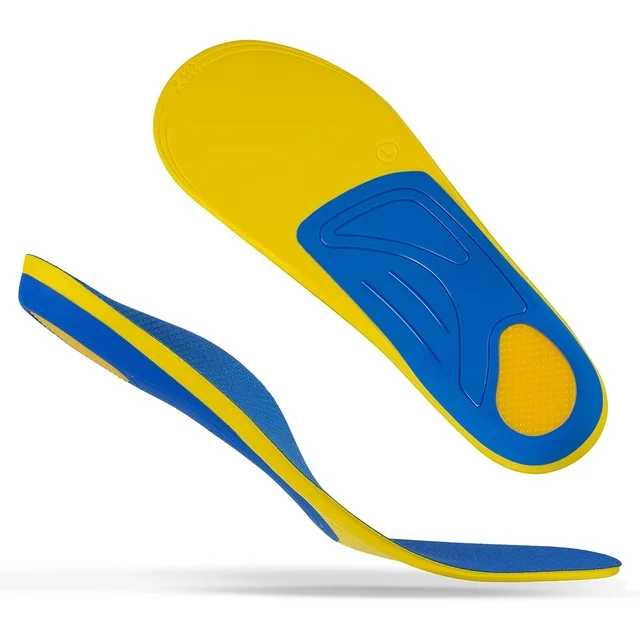
3. Features of Atlas Arch Support Shoes
Cushioned Support: Shoes with Atlas Arch Support offer cushioning specifically designed to cradle and support the arches of growing feet.
Stability and Alignment: The support provided by these shoes aids in maintaining proper foot alignment, reducing the risk of overpronation or other alignment issues.
Breathable Materials: Choose shoes made from breathable materials to maintain a comfortable environment for the feet and reduce moisture build-up.
4. Benefits for Infant Foot Development
Enhanced Comfort: Atlas Arch Support promotes comfort and reduces fatigue, supporting infants during their exploratory activities.
Aid in Foot Development: By providing the right support and alignment, Atlas Arch Support shoes contribute to healthy foot development and arch formation.
Promotion of Stability: These shoes offer stability, assisting infants as they start to stand and take their initial steps.
Allow Barefoot Time
- Inspire your little one to dedicate some moments without shoes on their feet in order to foster the natural growth and development of their precious foot muscles and structures.
- Walking on various surfaces, such as lush green grass or soft sandy beaches, plays a vital role in enhancing the development of your little one’s muscles and ligaments, contributing to their overall foot strength.
Promote Healthy Walking Habits
- Motivate your little one to stand and walk independently when they feel prepared, ensuring their weight is evenly balanced on both feet.
- Avoid walkers or other devices that can interfere with natural walking patterns.
Trim Toenails Carefully
- Use blunt-edged scissors or clippers to trim your baby’s toenails straight across.
- Avoid cutting them too short to prevent ingrown toenails.
Massage and Gentle Stretches
- Regularly massage your baby’s feet to improve circulation and flexibility.
- Perform gentle stretches, such as flexing and extending the toes.
Seek Professional Advice if Needed
- Regularly check your baby’s feet for any signs of abnormality or discomfort.
- Consult a pediatrician or podiatrist if you notice any issues such as flat feet or toe deformities. They can provide you guidance and recommend appropriate interventions if necessary.
Baby feet are not just a source of cuteness; they are fundamental to your child’s growth and development. By comprehending the significance of appropriate foot maintenance and granting the essential assistance, you can ensure your little ones have a solid foundation for a lifetime of healthy movement. As you admire at your babies beauty, keep in mind to appreciate these invaluable instants and honor the marvel that is embodied in each step embarked upon by their minuscule feet.

